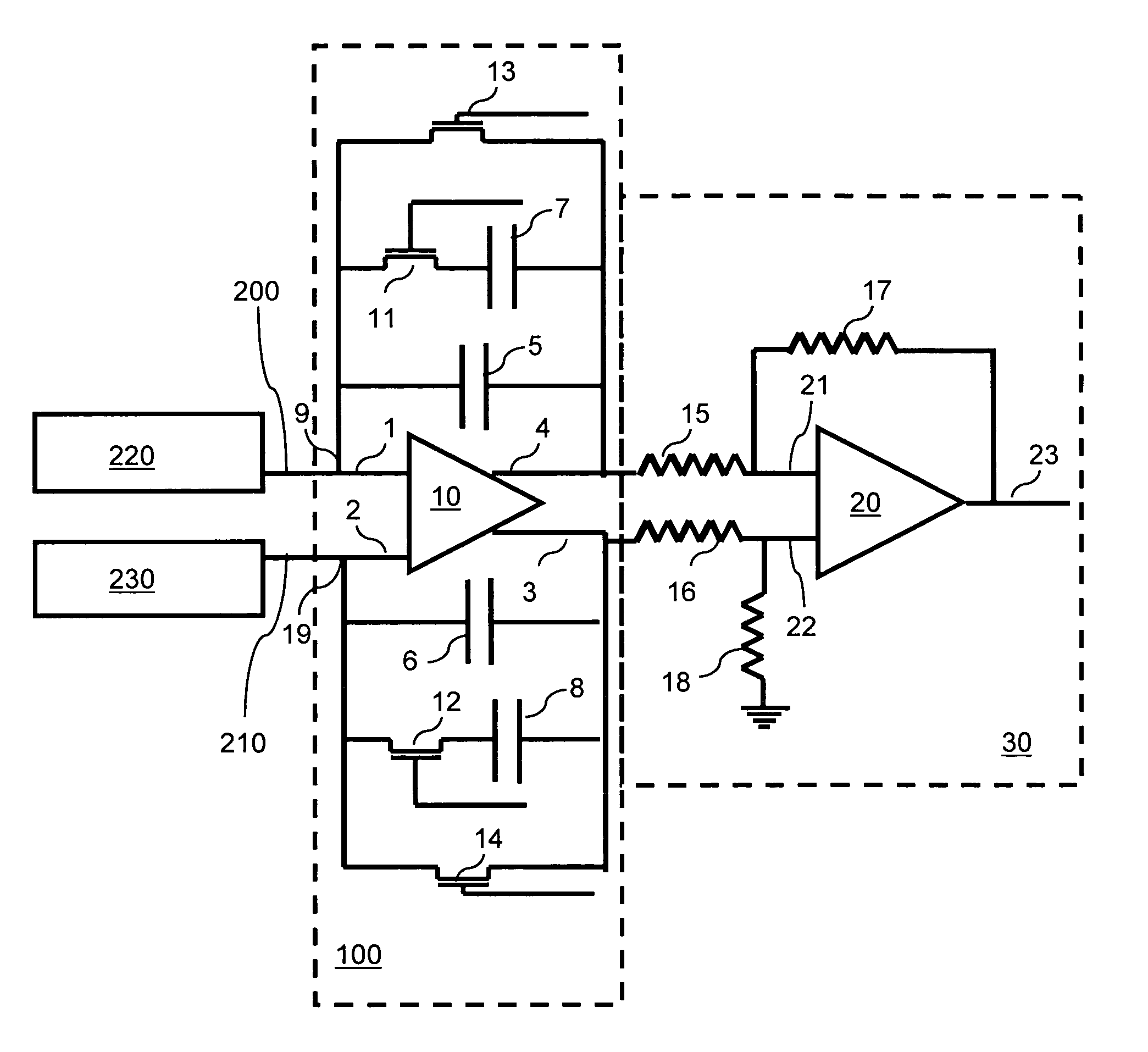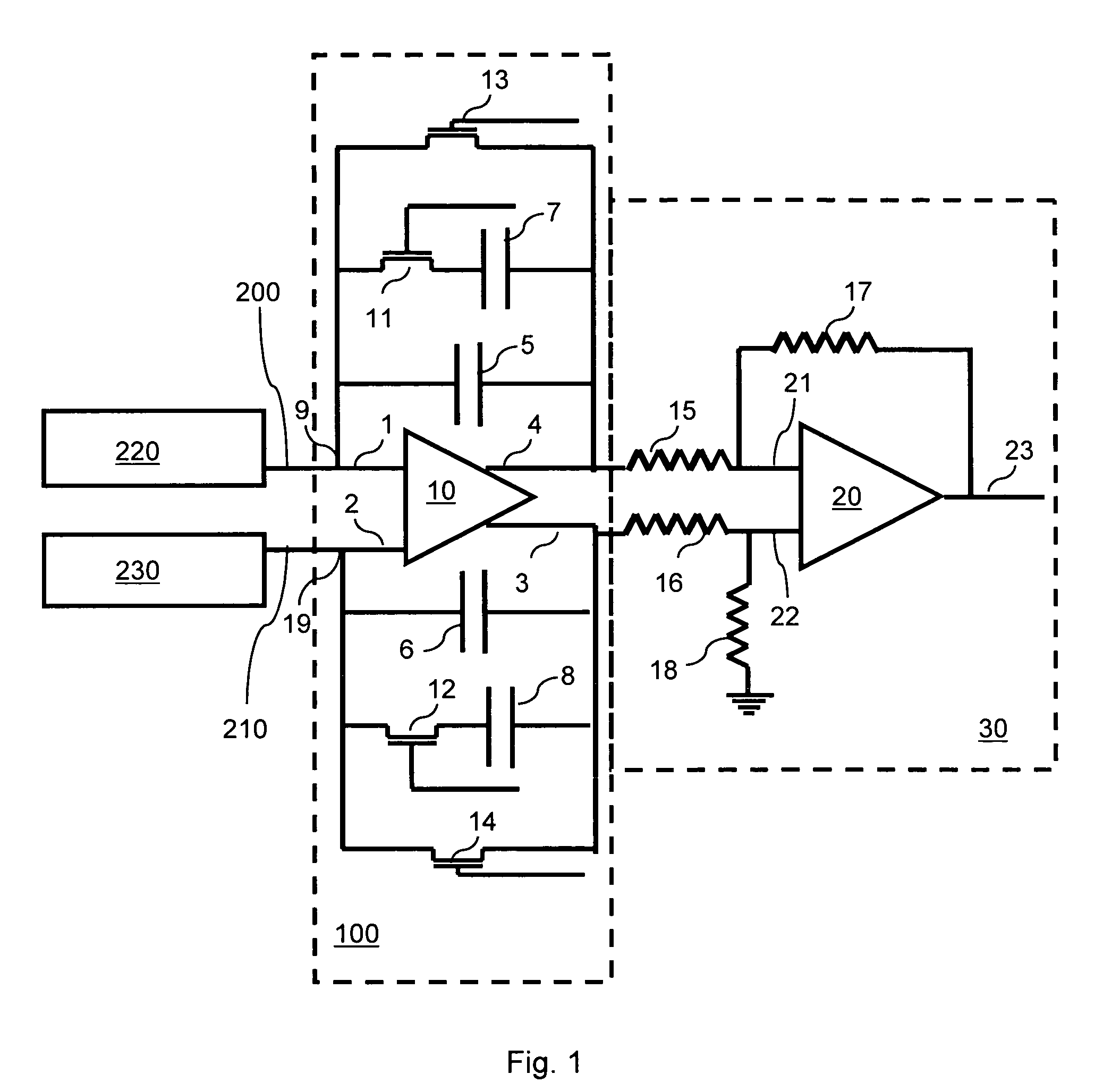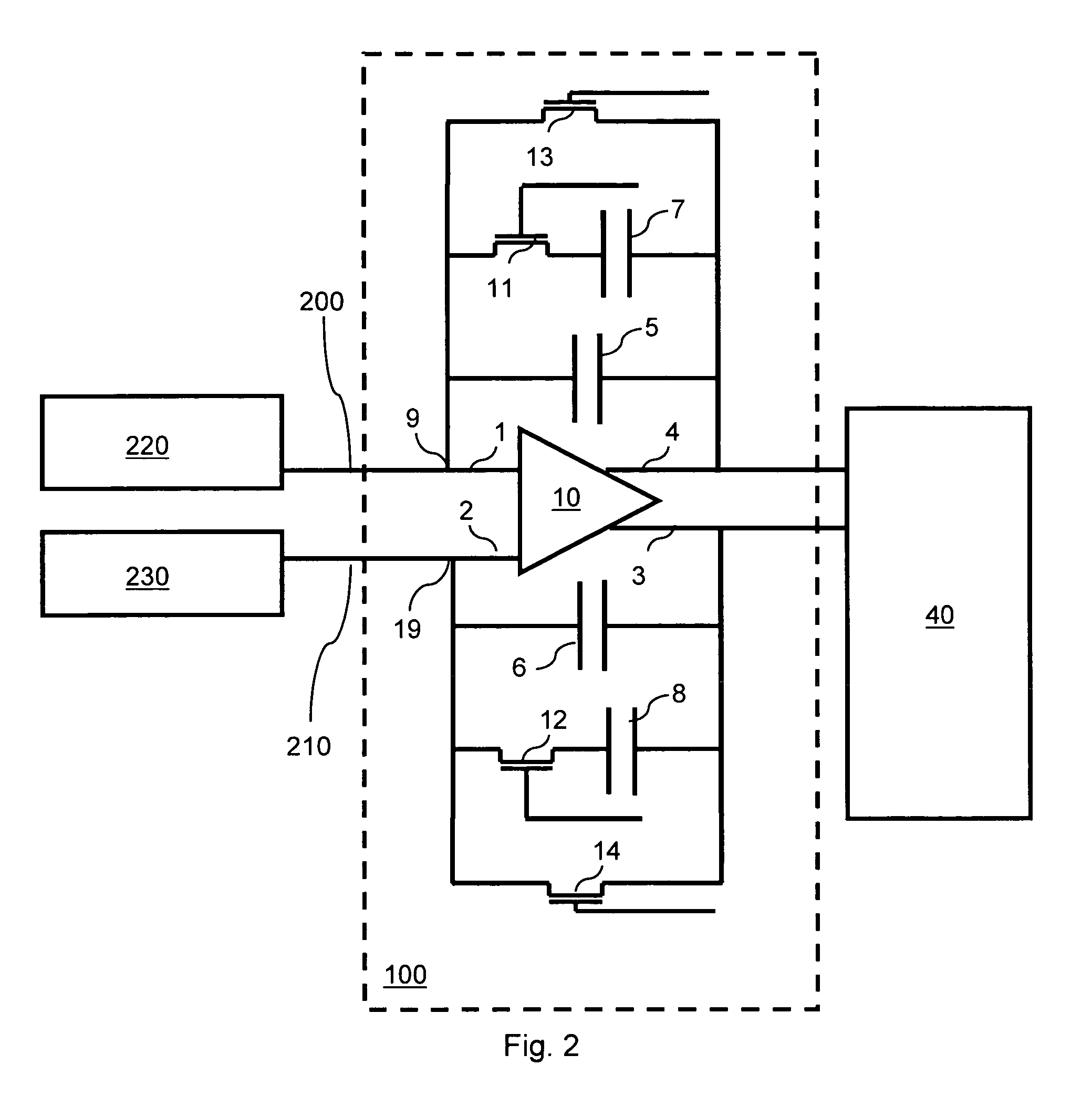Differential transimpedance amplifier circuit for correlated differential amplification
a technology of differential amplification and amplifier circuit, which is applied in the direction of amplifiers with semiconductor devices only, amplifier modifications to reduce noise influence, and amplifiers with semiconductor devices/discharge tubes. it can solve the problems of environmental noise problems that are especially susceptible to detection schemes for ions, electrons and other charged particles, and suffer from some inherent limitations
- Summary
- Abstract
- Description
- Claims
- Application Information
AI Technical Summary
Benefits of technology
Problems solved by technology
Method used
Image
Examples
Embodiment Construction
[0015]Several problems can occur when using typical differential amplification techniques. With such techniques, internal amplifier noise is uncorrelated, amplifier noise from the preamplifiers connected to the signal and reference detectors can add, and clipping can occur when noise signals are high. To overcome these and other common differential amplification problems, one can use the correlated differential amplification approach of this invention. The embodiments of the invention described herein display differential charge-to-voltage (CTV) conversion amplification with the following characteristics. Embodiments of this invention use time-correlated differential operation to minimize noise due to EMI and to provide for effective subtraction of time-correlated noise arising from external environmental sources and from the internal operation of the CVC or other parts of a detection system. True correlated noise subtraction is achieved using a differential output amplifier before ...
PUM
 Login to View More
Login to View More Abstract
Description
Claims
Application Information
 Login to View More
Login to View More - R&D
- Intellectual Property
- Life Sciences
- Materials
- Tech Scout
- Unparalleled Data Quality
- Higher Quality Content
- 60% Fewer Hallucinations
Browse by: Latest US Patents, China's latest patents, Technical Efficacy Thesaurus, Application Domain, Technology Topic, Popular Technical Reports.
© 2025 PatSnap. All rights reserved.Legal|Privacy policy|Modern Slavery Act Transparency Statement|Sitemap|About US| Contact US: help@patsnap.com



